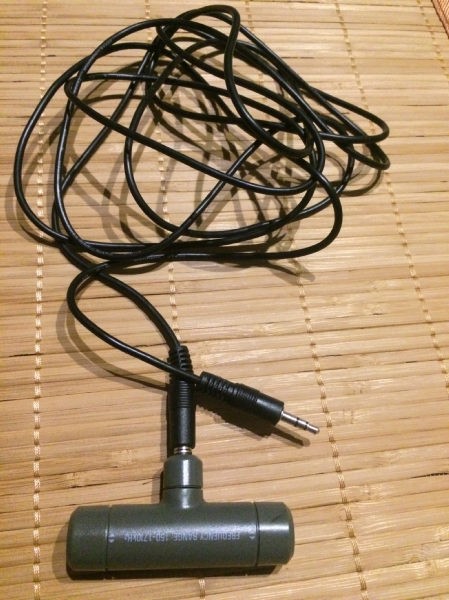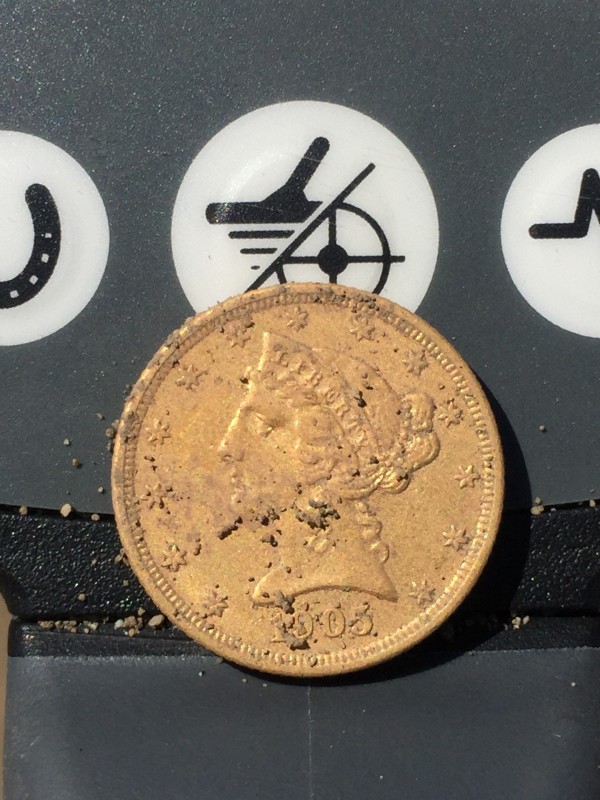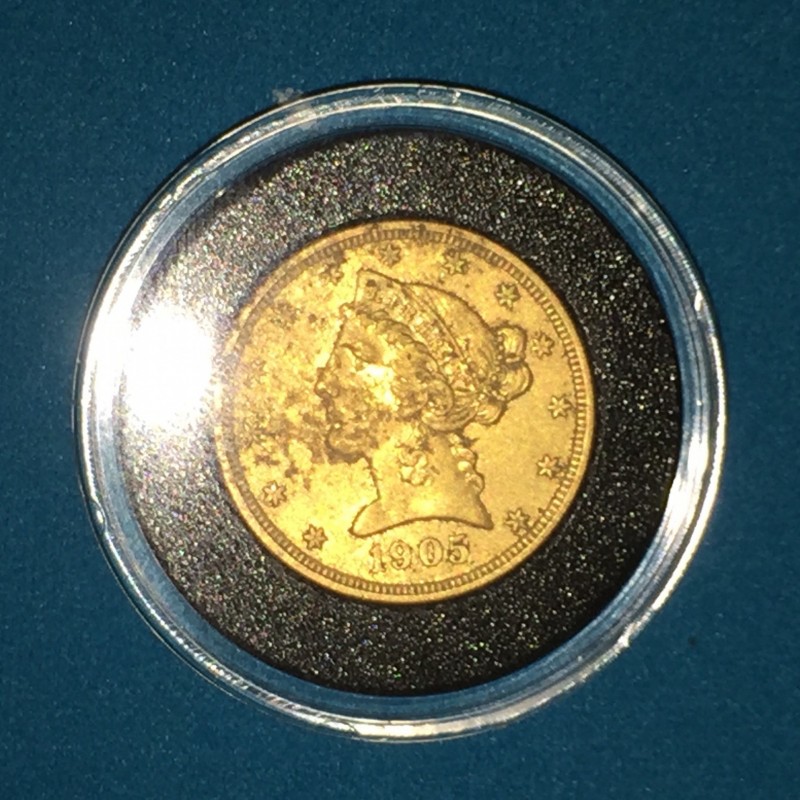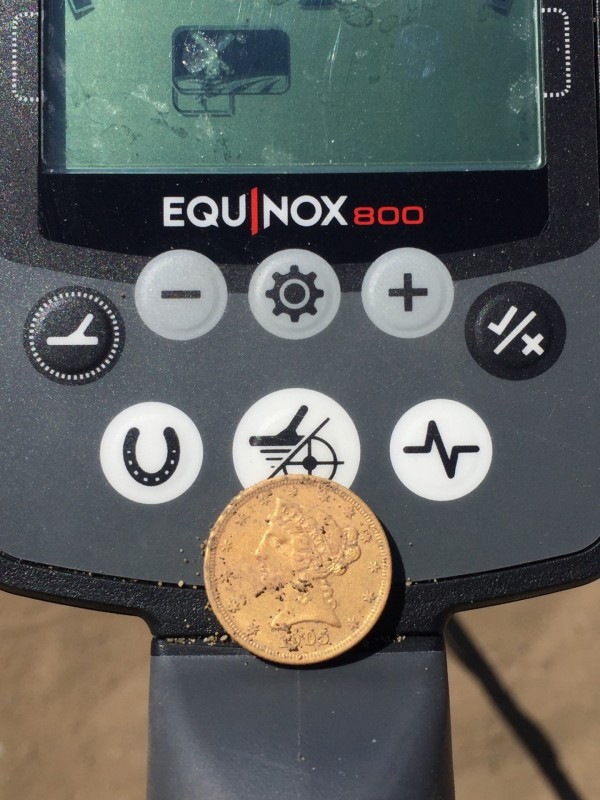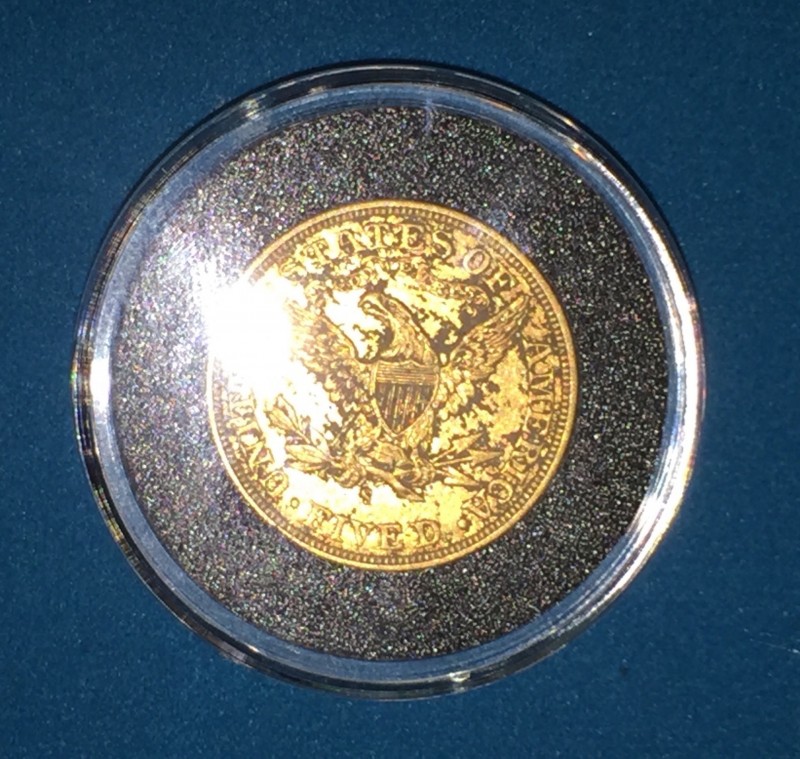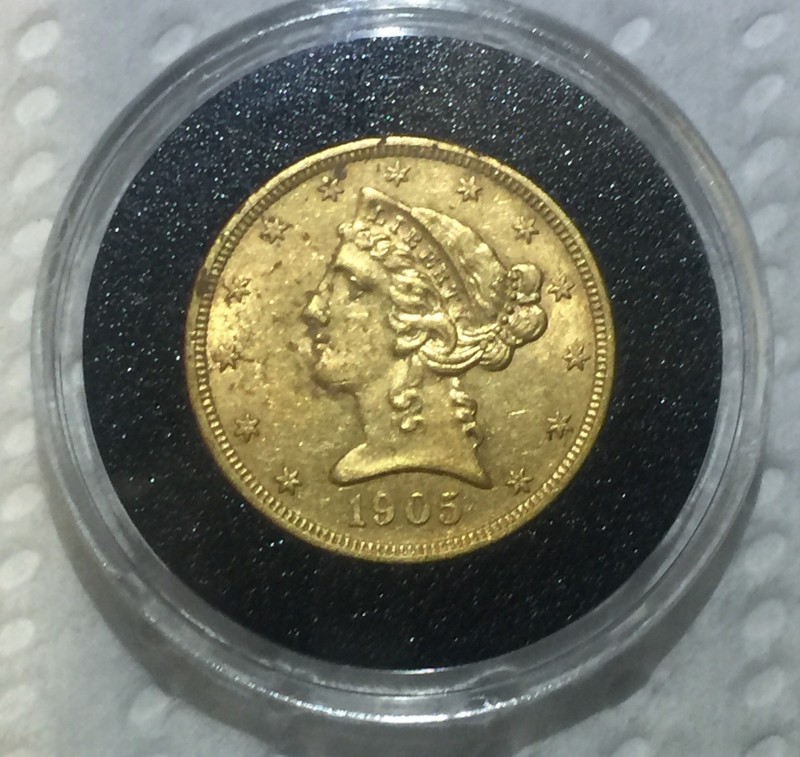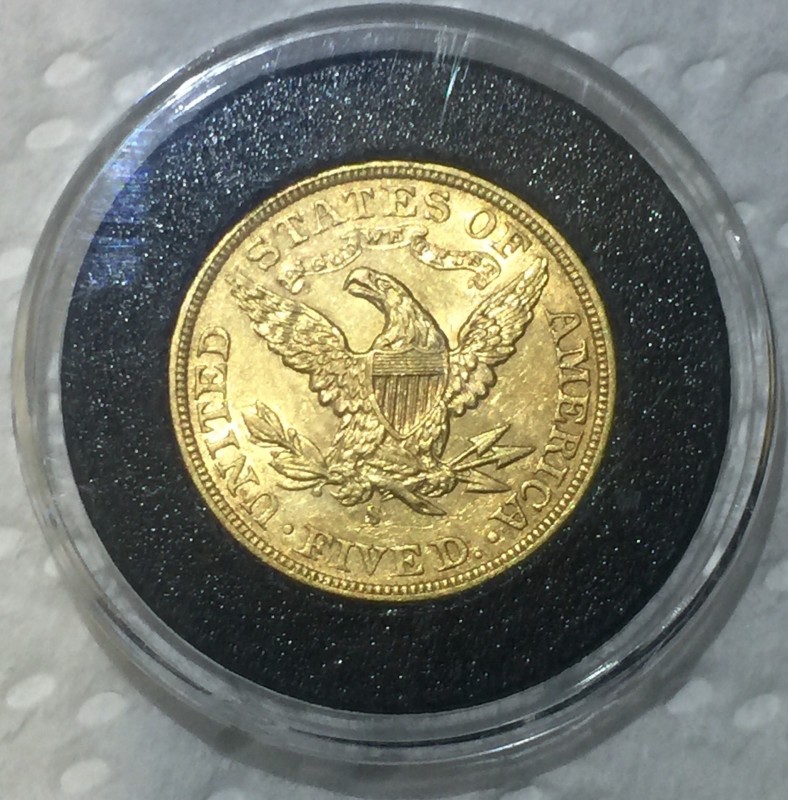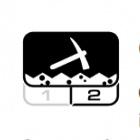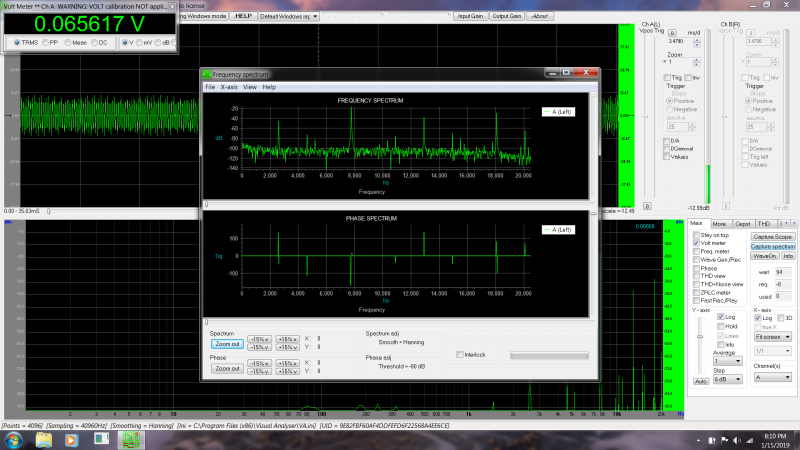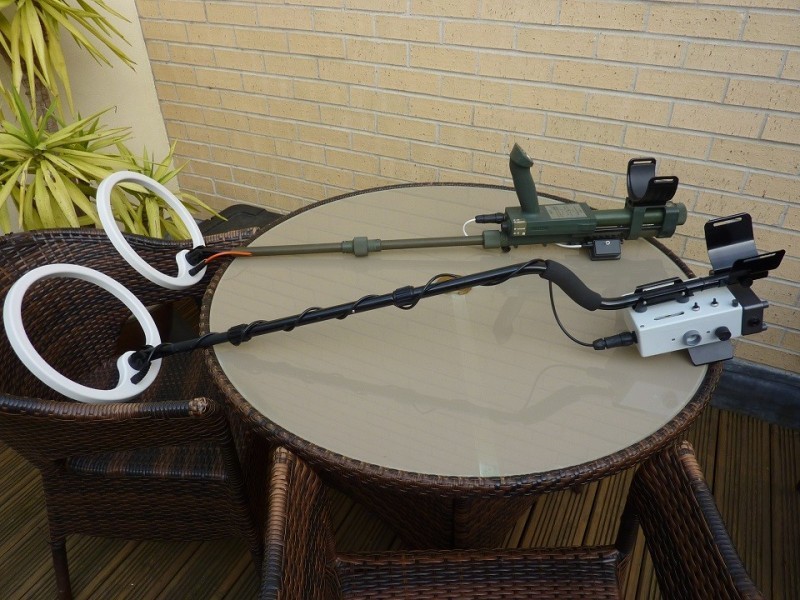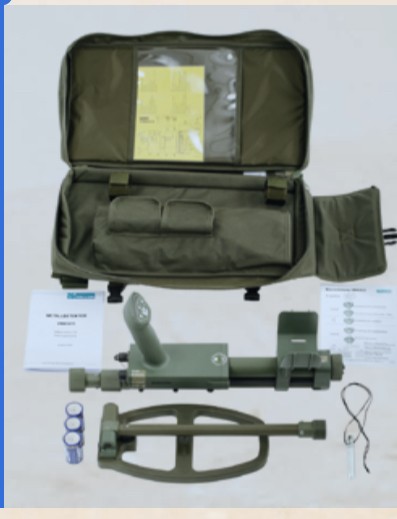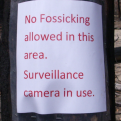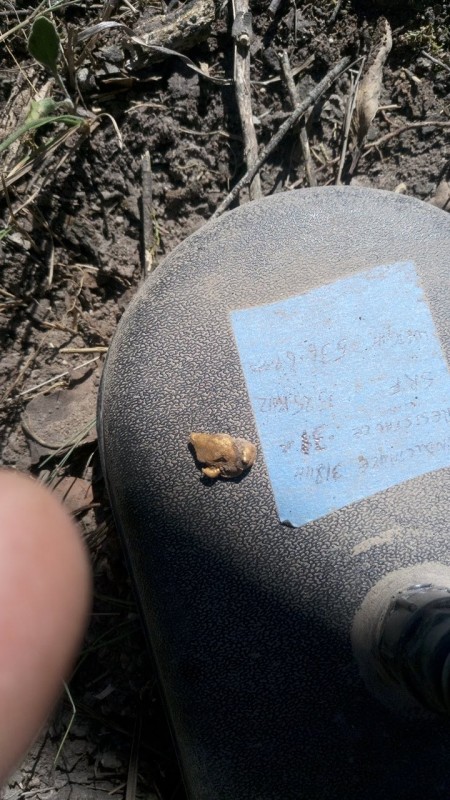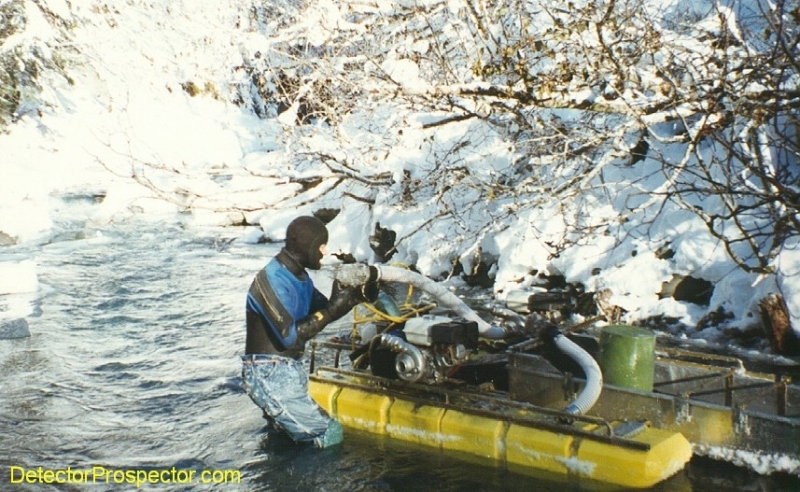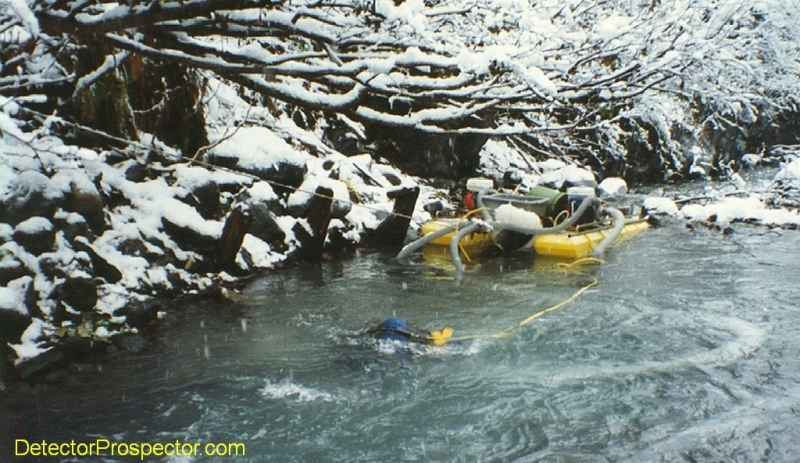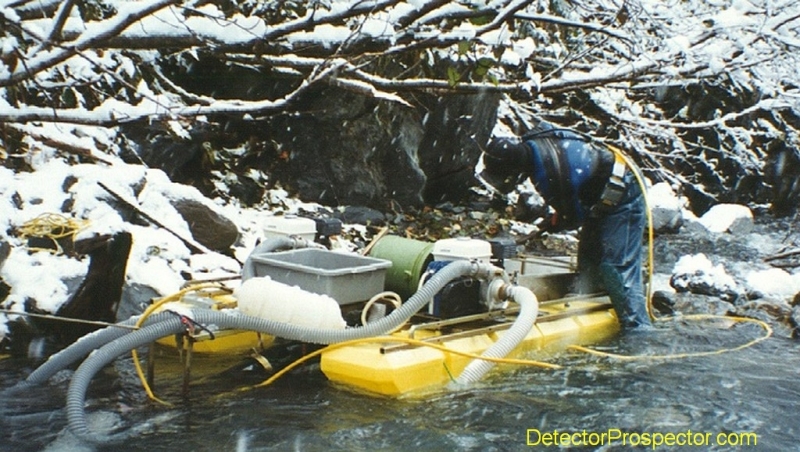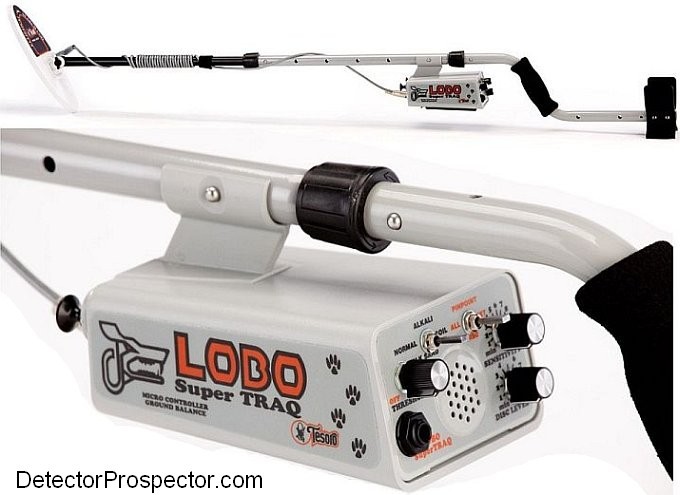Leaderboard
Popular Content
Showing content with the highest reputation on 01/17/2019 in all areas
-
Mr. Anguilla; You already have a couple of very important "accessories". One is your optimism and the other is the willingness to seek advise. A GPZ 7000 is not the last word in gold detectors. for detecting under ground you will find it to be a big, clumsy, heavy, club of a detector. So here is 2cents worth of advise. Get a good Minelab GPX model with a small mono coil ( a Nugget Finder Sadie comes to mind) and what you loose in performance (questionable) will be more than compensated by the agility to work overhead and easily follow the contours of the tunnel surfaces plus ability to shorten the coil shaft on a GPX. However the 7000 is unbeatable (at this time) for cleaning up hydraulic pit floors and ground sluice areas. If it is at all possible try to arrange at least a couple of hours with a 7000 and that would tell you a lot about what you are trying to learn. There just isn't one detector that will do it all. You can pay me 2 cents out of next summers profit.5 points
-
5 points
-
Thanks a lot for the advice everyone, much appreciated! It's given me much more to think about and consider. Good thing I asked before making the purchase.4 points
-
Northeast The guy next door married his tenth wife after he moved in . He past away last year and he was about a year younger than myself. Whatever made him so great didn’t show on the outside and I say this because he wasn’t bigger than a popcorn fart . The sad thing they couldn’t have a regular funeral. So his wife had him cremated and that was because they couldn’t get the smile off his face . Chuck3 points
-
Hello all! My dad used to take me metal detecting as a kid back in Maryland and recently I started feeling like that might be a fun thing to do again... you know how it goes. ?. He’s primarily a coin and relic guy but I find myself drawn more to beaches and gold prospecting. Learning a lot about black sand really fast! Looking forward to chatting with y’all! -Julie2 points
-
As far accessory items go I wrote an article addressing that very question....2 points
-
If one guy was writing that much stuff under that many different names for the magazine then I can see why the doors are shutting.2 points
-
This behavior (large coil likes recovery 4) seems to be a fairly common observation. I have heard others say the same thing. This may be partially driven because you can go deeper with this coil than stock, so lowering recovery naturally tends to clean up those deeper targets. But that is not really the case on the shallower iffy signal targets, so I can only guess is that they are otherwise more challenging due to their orientation or other factors. It could also simply be that 4/5 recovery just happens to be optimal for this coil vs. stock and the 6" but I don't have solid technical theory on why that is the case.2 points
-
2 points
-
Steve I wish I could say what you told me was something I didn’t know . It helps to have a full print of the owners manual and reading all what frequencies each coil can run in including the X 35 coil . I came to the conclusion long ago that the 9” round coil would fill my needs in the ORX if I buy one . Just like you so many people on the forum want to help and that’s what makes this forum great . Chuck2 points
-
Trying to learn something. Didn't have an idea how fast smaller nugget signal decayed. Have asked before in another forum and always got the answer, to much variation. Wanted to know how small a nugget a good PI detector could detect to get some for testing. I made a PI circuit. Tx coil, Rx coil, control circuit, amplifier looking at Rx and log amplifier looking at amplifier out. Record log amplifier out vs time and chart. Most targets with a time constant<10usec decay straight line on a linear log chart. Loose 63% of signal every time constant, loose 90%(decade on chart)) every 2.3 time constants, loose 50% every 3 small divisions on chart. A eight inch coil could loose 3 to 4 inch detection distance for every decade lose in signal. The shorter the time constant the sooner the need to sample. Probably need a smaller coil to get a good chart for the 8mesh nuggets, data below the 0 line(1% 0f full scale amplifier out)starts to be effected by noise when charting. Added a 1 and 2usec time constant decay line on chart to compare target decay with, most nuggets decay with a slope between the two lines.2 points
-
2 points
-
2 points
-
Hey all! I’m super-new but wanted to say thanks to everyone because I’ve read soooo many excellent posts on this forum before joining and have learned a ton! I’m an obsessive newbie in the Los Angeles area who’s recently picked up a Garrett Ace 250 to kick around with my Dad when he visits (we used to detect parks and schools in Maryland when I was a kid with his old Compass). The Ace is fun and great in parks - I’m fond of it - but I’m really more interested in wet sand detecting on the beaches and in gold prospecting. And it just doesn’t handle salty wet black sand well... or find tiny gold.... So of course I’m looking at getting a second detector. My Dad is thrilled. My Mom is horrified ? I was trying to decide between the Goldmaster 24k and Gold Monster 1000, but then the idea of the Equinox 800 snuck in and I was thinking maybe it would be a good beach AND gold detector. But then I really like the Goldmaster 24k in the few videos I could find. But the Gold Monster 1000 is blue and has that lovely little whoop whoop sound.... I know there’s no “best” detector, and from what I can tell those are all great detectors. But I’m hoping someone can nudge me off the fence. Does anyone have any thoughts about these or other models for use in Southern California? So many beaches, so many reports of gold... SO MUCH BLACK SAND! Thanks in advance for any advice! I know this was long but I wanted to provide enough details of where I am and what I’m looking for to be useful. Also, I’m chatty. ? -Julie1 point
-
This particular find happened on July of this year. I went out today for few hours just to kill time. I wasn’t expecting much so I was just taking my time digging targets. I was digging lots of thrash as usual along with some pennies. I was using the Equinox 800 and since I wasn’t finding much I started just jumping between park 1 and field 1. After a few hours I came across this iffy target that would jump all over the place with negative numbers and hit 20-21 once in a while. I’m like another penny, I guess I will dig it since it’s my last target. I dug it and I see this weird coin staring back at me. I grab it and I’m a little confused now cause it sure doesn’t look like a Penny at all. After a few seconds go by it finally clicks, OMG this a fracken gold coin. Now I’m shaking And trying to figure out what to do next. After a minute or two I figured I should put it on top of the detector to let it breath and take a picture. Well, here it is and I hope this isn’t a dream. Thank you for looking and remember to dig everything because you just never know. I wish you all a Happy New Year. The last two pictures are after I finished cleaning it with water without any rubbing. The coin looks better in person but my camera phone can’t capture it good. I found the coin in a public place where construction was being done. A lot of old dirt was pulled and spread out, about the size of a football field and 12”+ in depth. A few of us hunted this site for a couple of weeks till they took most of the dirt back and cover the rest with clean dirt. I will make another post later with my othe finds from there. Happy New Year to all.1 point
-
It appears nothing came of all this. I sure would like an updated version of the SDC in a standard configuration with optional coils but I am not going to hold my breath for that one.1 point
-
Tones are very customizable ? Yes and no. Read the manual and leave it in factory defaults for the first few hunts and you should get the hang of it. If at the beach you could also dig everything for the first few hunts to give you some real feedback about tones/VIDs Versus actual target.1 point
-
Published on Jan 12, 2019 by Gaptain's Metal Detecting Vlog1 point
-
Thank you all very much for your thoughts so far! @Northeast, the waterproof feature is a DEFINITE plus because I’m clumsy. ? I wasn’t sure if I’d care much about the visual display since I don’t use the one on the Garrett as much as I should, but the audio is really nice on the videos of the Equinox I’ve watched. I think it’s got some way to customize the tones for different ranges of conductivity? @Dubious, I was looking for a gold-specific machine (and maybe also a separate beach-specific one!) because it seems usually general purpose machines are jack of all trades, masters of none - and from what I can tell of the soil and sand out here, that won’t do. ? But the Equinox seems to be the exception to the rule on that - seems like people have good success with it wherever they take it. Does seem to have a bit of a learning curve though. @mn90403, thanks for confirming that the Equinox works well in my area - that’s a major concern for me! I like the Ace 250 pretty well compared to the last 1980-ish machine I used! ? I sometimes find the pinpointing frustrating and I hate the headphones I got with it - cord is too short and the things slip off my head every time I bend down to dig. Could be my head’s fault I guess, maybe it’s shaped funny. So light and easy to get started with. Seems to find very tiny pieces of junk in all metal or jewelry mode - in trashy areas I end up switching to coin mode which works well but I worry I’m missing my gold necklaces then. Hasn’t found me any gold in the dry creek beds but I wouldn’t expect it to - but I figure no sense in not trying if I have it with me. ?1 point
-
...I also surprised me ..the "15X12 Coil" in the more demanding terrain sweeps speed 4-5 gives optimal results .., Speed 6 - weak signal, weak ID - try to sweep faster here .. you get better signal . The 15x12" coil has more to do with the sweep speed - from the" recovery speed" -/ground filter+recovery delay scan/ -settings... in this case, recovery delay scan- this is the time of capture signal- too short for a 12x15 "coil..in mineralized terain.. In another situation-To verify signals ... would lower sweep,, and the speed to 2-3 you will get ,better signal,better ID ....- but in normal sweep you lose signal ....In low mineralized terrain it is not so visible...1 point
-
Julie, The 800 is a truly light and versatile machine. I've used it in all the areas of Southern California that you have mentioned. I've found some small gold with it using the standard coil and I've found many gold and silver pieces of jewelry on the beaches. It works! What have your results been with the Garrett Ace 250? Mitchel1 point
-
Even though its been stated that using the Frequency Spectrum to see the frequency, is an error, I'm seeing the same results as EL NINO77. I'm seeing a Visual representation of the frequency that is dominant, where his (much better) is both a visual output and a numerical frequency HZ. I need to see if I can make my program replicate what EL NINO77 has posted.1 point
-
Sony MDR-J10 been using them for all types of detecting for years and years....with a 1/4 adaptor they work fine and on the 1/8 female plug the go direct... I buy them on Amazon because the new models have a closed-loop rather than open, as in the first pic... fred1 point
-
Phrunt, Only had the 15" since Christmas, so about 20 hours on the beach. Like you, I was at first disappointed with sensitivity to coil knock, target ID/scratchy signals. I lowered recovery to 4 in the wet and am now a happy camper. In the dry, I run recovery 5 and am amazed how quiet it is and also the machine's ability to sniff out small targets. Also have spent some time using Field 2, recovery 5 in the dry with pretty good results. Usual settings are Beach 1, sensitivity 22-23, Beach 2, 22-23. For me, targets ID's do vary from the stock coil, especially our despicable zincoln pennies which can register from 12 to 24. I have dug some US clad quarters that registered -6 on ID at first pass. After the first scoop of sand is removed, the signal is more in line with what I am used to seeing. That could be because the target is deeper. With that, I am pretty much digging every repeatable solid signal, even if it falls in the iron range. I definitely need more time with this coil. Sweep speed is slower, but covers as much ground as normal speed with the stock coil. Beaches here are pretty sanded in so targets are few. Got some storms coming in and hopefully they will strip off some of the overburden. Will keep you posted.1 point
-
Yes, if I am to believe what XP said in a recent interview. One also possibly fully waterproof.1 point
-
If you want a machine that can do it all--parks, beaches, fields and gold prospecting--really no choice: get the Equinox 800. With its multi-frequency modes and selection of single frequencies, it's the closest to a do-everything machine that has come along. In gold modes, I believe it also approximates the behavior of the gold machines (I have the 600, which doesn't have the gold modes, so maybe someone else can chime in on this).1 point
-
1 point
-
I would definitely choose the Equinox 800 over the Gold Monster. The Equinox will handle finding small gold if you end up prospecting but it will also handle the parks and beach much better than a Monster. The audio information and VID's on the Equinox are also winners. I have never used the 24K but being a 48khz single frequency VLF it will have similar characteristics to the Gold Monster and be lacking VID's. The Equinox also has the advantage of being completely waterproof. Best of luck with your choice ?1 point
-
1 point
-
1 point
-
1 point
-
Even at 77 I’d taken the other. I guess that’s why I’m on my second wife now. It hard for a old hound dog to stop wanting to hunt. Chuck1 point
-
1 point
-
If I need this X 35 coil to coin hunt then why would XP people say I can coin hunt with the 9” round HF coil . If I add up what they want for the ORX and the X 35 coil to make it a working tool is a lot . You may not believe this but if you add up the cost it comes to 1324.00 . You may not feel the pain in the backside when I said the total cost but I sure did . Chuck1 point
-
1 point
-
I'm actually in this to satisfy my on curiosity. Not trying to prove or disprove anyone. And certainly not to discredit other, in any way. This software also has the capability to output like an oscilloscope. I'll tinker more in the coming days. Thanks for the message EL NINO77, I'll see if I can make those adjustments.1 point
-
anguilla, pity you can't get hold of a QED as not only are they super light, but a QED will not go 'off it's nut' when used vertically, unlike Minelab detectors. Very good for checking the walls of open cuts and drives.1 point
-
G'day anguilla. Welcome to the forum. For inside the mine (unless it is quite open and cavernous) you may find the GPZ a real pain in the bum and nowhere near the best detector for that job. Holding a GPZ sideways in a mine will bring weight challenges, will be awkward, may not ground balance properly, has a very large coil, etc. Coil control is essential to get the best out of the Z. Something like a Gold Monster that you can stick on a shortened broom stick (literally) and that has a small coil that you can poke into holes and crevices and is smoking hot on really tiny gold might be a much more appropriate and cheaper alternative. Certainly for outside the mine the GPZ will shine with regard to detecting shallow and deep gold. But...it will also detect every other scrap of metal known to man and will have you digging some seriously deep holes for bolts, screws, tin, etc. And if this location has had a thousand mines then it has had 10,000 miners and they will have left crap everywhere. The GPZ is a beast and I have loved mine but yours may be a situation where another detector/s may suit your needs better? Whatever you decide, enjoy the time with your son. That's the gold ?1 point
-
I ran a few test tonight and here is a captured picture of my Equinox in multi-frequency mode. I couldn't get my capture to go higher than 20, but that is my computer hardware problems not the Equinox. I also did single frequency captures and all look good but frequency 5, but here again I'm not sure I've got everything set correctly. Stay tuned1 point
-
1 point
-
I posted this last month on an old thread in the Metal Detector Advice about the Vallon mine detectors. The consensus was that as nugget hunters they might not be so great. While I have no data on that, I suspect that they might be pretty good except on extreme OZ ground - probably equal to or Better than a TDI. As a beach machine however, they present a really interesting possibility. I have now checked out the 2 I bought on eBay from Poland and they both work fine. Here’s what I posted, followed by a bit of an update....They are a good bit lighter than an ATX - about like a TDI. 3 D cells, but you can use AA to D adapters and lighten that up - the power consumption is quite low and so that works, but get the ones which take 2 AA’s pr adapter so you can use 4 or 5 for longer run time, the machine runs on 3 - 4.5 volts - pretty remarkable engineering for a PI. Blast from the past on this 2 year old thread. I just ordered two of them from Poland. I took the plunge after tracking the ongoing (67 pages now) thread on Geotec. The thread was started by Eric Foster - noted PI detector designer - and is clearly showing that the Vallon VHM3CS is a very capable and interesting beach and relic machine - and may be useful for native gold as well. http://www.geotech1.com/forums/showthread.php?23169-Vallon-VMH3CS-Mine-Detector - the pics below are from Eric. The top ones shows a transformer box for conventional headset - see below. So, now I have them, I have done some simple functional checks. They detect a nickel buried in a wash here in AZ 13” down - about what a TDI will do. The interesting news is the the Vallon agent in the US will update the software to the latest version - free. If the units are sent postpaid both ways! So $199 on eBay, $67 shipping, and you have a useful non-discriminating beach PI for under $300. They come with the case which is really nice, heavy-duty canvas with shoulder straps and a “one-ear” headset. The headset connector is a milspec item but the wiring diagram is published and the mating plug is $8 surplus online - Piezo phones only unless you build a transformer in the circuit. https://www.ebay.com/itm/Army-metal-detector-VALLON-VMH3CS-Working-condition-BROKEN-ARMREST/282998790673?hash=item41e40ada11%3Ag%3AOqoAAOSwAnhbGTdX&LH_BIN=11 point
-
My goal is to just get out and detect more this year. Last year ended up with lots of projects I wanted to get done...now there almost done. Another thing that I need to start doing is more intensive researching for relic spots. I've been meaning to try some water hunting in areas only accessible by boat. I got my boat ready last year but then never took it out. Another thing is to spend more time learning the Nox. happy hunting strick1 point
-
QED inventor Howard finds his biggest piece so far. Like Bruce Candy, Howard has little time for detecting. He's a one man band who not only designs, but also manufactures and assembles every machine he sells. I know he got a huge thrill finding this shallow 4.2 grammer in new ground late yesterday. Lets hope it's just the start of a patch. He writes: "A 4.2 gram nugget at ~3" deep found late this afternoon with the QED fitted with an IBgold prototype coil. Many thanks to Reg Wilson for sussing out the promising area yesterday."1 point
-
Bill, Sorry I did not get to this sooner, was out of town again testing a coil and some new Settings. My input to your questions is my findings at the beaches I used and different locations could (probably will) result in change. 1) Yes the TDI beach Hunter is Deeper (on coins and most rings) than my Xcal, 3030 and Equinox in salt water. Not sure it is 40%, but I did notice the depth difference. Sensitivity to small targets. I found stud ear rings in the water with the TDI and that I did not expect from a PI. Now I will tell you, the Equinox is even more sensitive to the tiniest signals, but when I use the TDI I'm mainly looking for rings and the extra Sensitivity to other jewelry finds was a bonus. 2) The Hi/Low Tone Feature is a Lifesaver and after a day and a half, I had to nailed down. Even the iron hair pin (which does come in at a Hi Tone like most gold rings) I could tell from the pattern of the hi tone. Not having to dig all the coins (low tones) is perfectly fine with me. 3) My 40+ yrs detecting has taught me some pretty easy pin-pointing when compared to a Novice Hunter. Realize a larger 12" will make multiple beeps on a surface target, so be sure to lift the coil 6" to 8" off the ground to get a single response. This is also a good way to get a "gestimate" of target size and or depth. I had no problems. Again it was more Sensitive to smaller jewelry that I had expected, which is a win win. 4) Pulse Delay Setting varies, but I try to keep it from 12 to 18. If hunting a site and beach conditions/time permits, I'll be around 12 for smaller gold, but if I need to grab and go and after the gravy, then around 16-18. Ground mineralization also affects the desired setting of Pulse Delay. Realize the Ground Balance too is working with the Pulse Delay so there is no exact setting for all. Word of caution on the Hi/Low Tone Identification System. As you make bigger adjustments to GB and Delay, it does change the pattern of Tone ID, so again you are best to have a couple sample targets at your desired location and play with them, the detector and settings to learn what is ideal for that site. Yes it could take you 15 to 20 minutes, but Detector knowledge at that site = Treasure Finds Success. All ear ring finds in the photo were recovered with the new White's TDI Beach Hunter on the trip. I'd say it certainly does have Sensitivity to small targets and that usually is not what a PI is best at. White's did quite well again.1 point
-
I had to send my mojave in a while back because it was so noisy. Got two messages from Rusty at Tesoro...one on my cell and one on my home phone that it was a bad coil and they replaced it and it was on its way back to me. When I opened the box, there was also a handwritten receipt of what had been done to it and he mentioned in the note that they had included a new battery compartment cover! How often do you experience that today?1 point
-
My first detector I bought was from Jack's advice; The El Dorado in 1984 I think. I kept it and a Silver Sabre until about a year and a half to 2 yrs. ago. I really like the simplicity and power of the Tesoro's. Very sad to hear that they may close. Their customer service was excellent!1 point
-
Ask that question on any other forum and the only answer you will get is "do your research". Steve, that is a great post, simply outstanding.1 point
-
Here are a few more photos of me dredging at Crow Creek in 1996. I usually dredged by myself so photos of me actually in the picture are rare, so I really appreciate Rich Lampright taking these photos. Getting the dredge ready. The pumps are tapped on the bottom with drains so they can be drained each night. Footvalve hoses are pulled out of the water or the water in them freezes overnight. I usually stowed the carpet and riffles underwater overnight - here they have already been reinstalled in the sluice box. Probably around 15 degrees in this photo, so I have drysuit gloves and enclosed face drysuit hood on already. I usually suited up in camp and lived in the suit all day. Yes, I got cold. The only solution really is to just work hard and keep tossing rocks. The oversize blue jeans protect the lower suit from wear, and have miners moss sewn on the knees with fishing line for extra knee protection. I wore rubber galoshes to protect the drysuit boots from excessive wear. Gloves are coated with AquaSeal, as are elbows and forearms. OK, about ready to hop in, and you can just make out that it is snowing again. I really liked this dual engine 6" and put a tub where the motor would be with single engine versions to hold tools and misc gear. Since everything went in and out of the canyon on my back I was much happier making two trips with 6.5HP pumps than a single trip with one 13HP pump. The mask is a U.S. Diver's Mark I Pro, not made for many years but the best cold water dredging full face mask I ever used. It had a removeable mouthpiece tube for the regulator, and once I got the mask on it also stayed on all day. The regulator could be pulled if the motors were shut down for refueling. I am using three 15 lb lead weights here, as a drysuit takes more weight to keep sufficiently anchored in the water. I added a fourth weight, for 60 lbs of lead, when in faster water. I had to pack into the canyon each day, and carried a 5 gallon jug of fuel in with me. The goal was to burn the jug of fuel, which running twin 6.5HP Honda pumps meant about 6 hours running time. I always left dredge off and spent an hour just tossing rocks out of the work area ahead of the dredge to minimize wasted running time. What with cleanups each day and winter hours this used up all the daylight I had available. And in the water finally. Always the best part, clear water, seeing gold going up the nozzle! The canyon at Crow Creek was full of reconcentrated tailing from later hydraulic operations upstream. These tailings were much thicker once but floods over the years concentrated them down to a layer two - three feet thick starting at the surface. Literally turn a rock over and see gold. The layer was fabulously rich and if I stayed in it a 2 - 3 ounce day was not unheard of, but I also had short days or poor days due to high water or being out of the gold, so it ran about an ounce a day average. My best day was about 8 ounces, where I think I got into an old sluice box spill. The dark post uprights along the bank are remnants of the old sluice and flume that ran down the canyon. It was about four feet wide, and the dredge is right over the remains of it. They mined the canyon clear to the bottom in the old days. I spent one fall mining bank to bank and to the bottom. Below the reconcentrated tailing layer was a jumble of broken rock and boulders, boards, moss chunks, etc. Stuff that they tossed back into the excavation as they worked up the canyon. Tailings filtered down into this stuff and there was some gold in it. Depth to bedrock was about 8 feet. The bottom had gold also, but they did a pretty good job cleaning it up. The box was holding the entire creek above the workers and they shoveled overhead into it, and except for seepage most of the water was out of the work area. I ended up determining that the time and effort to work to the bottom was keeping me out of the main gold for too long and my daily take suffered a lot for it. From them on I just worked the shallower surfacr enriched tailing layer. I spent years doing this as did a few other lucky souls who were allowed to work the canyon on a percentage basis. I was paying 25% for most of the time I worked down there, but it got upped to 30% near the end as I recall. A high percentage, but worth it for rich ground less than an hours drive from home. Most trips I stayed on site, but others when it was really cold I just commuted daily. Those were the good old days, the only caveat being gold was only a few hundred dollars an ounce back then. The rich gravel is now long since dredged up, and unfortunately too much of that gold got sold for far too low a price. I was fairly broke at the time however so the extra money really did help.1 point
-
Rick Kempf passed this to me and it does not look like good news. It is being reported most of the people at Tesoro have been laid off. http://www.treasurenet.com/forums/tesoro/589971-tesoro-laid-off-all-factory-staff.html Tesoro was not a real old company, since it was founded in 1980, actually making it the newest of the major U.S. manufacturers. Still, the company made its mark with lightweight, high performance detectors. Tesoro was also noted for many years for its exceptional support of the independent metal detector dealer. However, that policy changed after founder Jack Gifford passed away in 2015 and the company seems to have been on cruise control ever since. There are probably not too many people surprised by this, but if true it marks a sad day in metal detecting history.0 points






